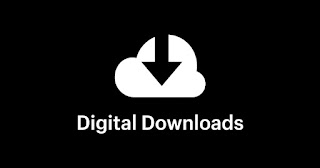The Evolution of Using Digital Downloads
The world of media consumption has come a long way in recent decades. One of the most significant changes has been the evolution of digital downloads. Digital downloads allow users to purchase and download content such as music, movies, and TV shows directly to their devices. In this blog, we will explore the evolution of using digital downloads.
Early Digital Downloads
The earliest digital downloads were in the form of digital music files such as MP3s. In the late 1990s and early 2000s, music piracy was rampant, and digital downloads were seen as a way to combat it. Services such as Napster, Limewire, and Kazaa allowed users to share and download music files for free, which led to legal battles and the eventual downfall of these services.
Introduction of Digital Distribution Services
As digital downloads became more popular, companies began to offer legal digital distribution services. In 2003, Apple introduced the iTunes Store, which allowed users to purchase and download music, TV shows, and movies. Other companies followed suit, and today there are numerous digital distribution services such as Amazon Prime Video, Netflix, and Spotify.
Expansion to E-Books
Digital downloads also expanded to include e-books. Amazon introduced the Kindle e-reader in 2007, and with it came the ability to purchase and download e-books directly to the device. This revolutionized the publishing industry, allowing authors to self-publish and sell their work directly to readers.
Shift to Streaming Services
In recent years, the focus has shifted from digital downloads to streaming services. With the rise of services such as Netflix and Spotify, users can now access vast libraries of content without having to download anything. Streaming has become the preferred method of media consumption for many people, especially younger generations.
Advancements in Technology
Advancements in technology have also contributed to the evolution of digital downloads. High-speed internet and the widespread use of smartphones and tablets have made it easier and more convenient for users to purchase and download digital content.
In conclusion, digital downloads have come a long way since their early days as music files shared on peer-to-peer networks. The introduction of digital distribution services, the expansion to e-books, and the shift to streaming services have all contributed to the evolution of digital downloads. Advancements in technology have made it easier and more convenient for users to access and enjoy digital content. The future of media consumption is sure to bring even more changes and innovations to the world of digital downloads.




Comments
Post a Comment